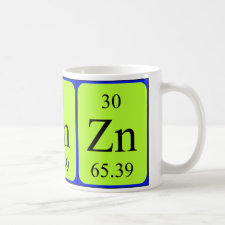
Authors: Kim M, Jiang Y, Kim D
Article Title: Zn2+-imprinted porous polymer beads: Synthesis, structure, and selective adsorption behavior for template ion.
Publication date: 2013
Journal: Reactive and Functional Polymers
Volume: 73
Issue: (6)
Page numbers: 821-827.
DOI: 10.1016/j.reactfunctpolym.2013.03.012
Alternative URL: http://www.sciencedirect.com/science/article/pii/S1381514813000722
Abstract: Zn2+-imprinted polymer was synthesized in porous spherical forms via a self-assembled complex between 2,2'-bipyridyl/4-vinylpyridine complexant/functional monomer and Zn2+ template ion. Diameters of particles ranged from 250 to 550 μm to enlarge the surface area and thus enhance the adsorption capacity. The presence/absence of the template ion in the preparation of the imprinted polymer was confirmed by EDX spectroscopy, and the physical structure of the particles was investigated using ESEM and BET analysis. The particle and the pore size were controlled by the cross-linker/monomer feed ratio. The adsorption capacity of the imprinted polymers was 210.61 μmol g-1 for Zn2+, while those for Cu2+, Ni2+, and Pb2+, were 37.92 μmol g-1, 33.02 μmol g-1, and 9.70 μmol g-1, respectively. This big discrepancy of the adsorption capacities illustrates the excellent separation selectivity of the imprinted polymers. The adsorption capacity decreased significantly at pH below 4.5, as the polymers are easily protonated. The imprinted particles lost only 10 % of their adsorption ability after 10 repeated uses
Template and target information: zinc ion, Zn(II)
Author keywords: ion imprint, polymer, adsorption, separation, selectivity



Join the Society for Molecular Imprinting

New items RSS feed
Sign-up for e-mail updates:
Choose between receiving an occasional newsletter or more frequent e-mail alerts.
Click here to go to the sign-up page.
Is your name elemental or peptidic? Enter your name and find out by clicking either of the buttons below!
Other products you may like:
 MIPdatabase
MIPdatabase









